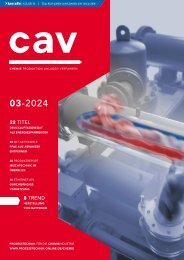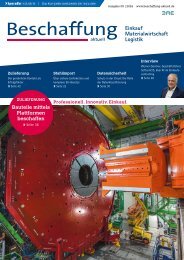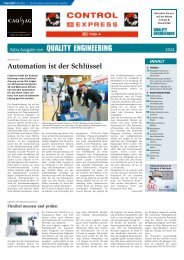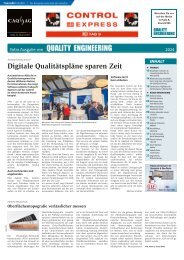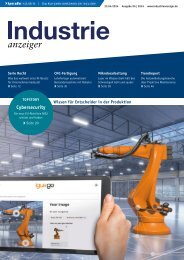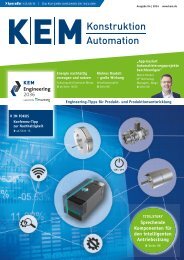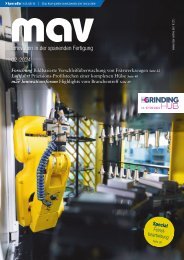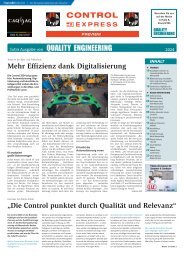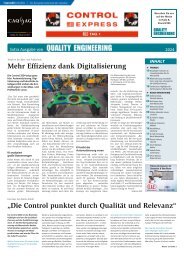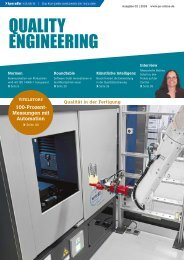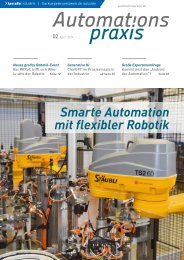EPP Europe P2.2023
You also want an ePaper? Increase the reach of your titles
YUMPU automatically turns print PDFs into web optimized ePapers that Google loves.
» PCB & ASSEMBLY<br />
Source: ArtiMinds Robotics<br />
No-code / low-code tools simplify and speed up robot programming thanks to their template-based approach<br />
Implementing robots in a time and cost-efficient manner<br />
Why no-code & low-code tools<br />
are vital in robotics<br />
There are various stumbling blocks when it comes to implementing automation tools<br />
that users often underestimate. In this article, automation solutions provider Artiminds<br />
reveals how new no-code and low-code software tools can help manufacturers avoid<br />
these pitfalls and facilitate flexible, simplified robot programming.<br />
» Silke Glasstetter, Head of Marketing, ArtiMinds Robotics<br />
Using robots is almost always worthwhile for<br />
companies. They can reduce labour costs, relieve<br />
employees, and make production more flexible<br />
– particularly as batch sizes become smaller and production<br />
processes more individual. Another major<br />
advantage of robots or cobots is that they work<br />
without breaks or fatigue, thereby increasing product<br />
quality and reducing scrap.<br />
Almost all processes can be automated using modern<br />
robot systems. Robots are often used for simple,<br />
dirty, monotonous, physically demanding, and even<br />
dangerous tasks. With the right hardware and, more<br />
importantly, software, however, highly complex or<br />
demanding tasks can also be tackled using ‘Advanced<br />
Robotics’. Examples of such applications include the<br />
assembly of flexible and bendable components such<br />
as cables, wires, or hoses or force-controlled surface<br />
processing.<br />
In line with the no-code/low-code trend, various<br />
software solutions on the market now enable graphical<br />
(and therefore simplified) programming. The advantage<br />
of this is that no special programming skills<br />
are required. The portfolio of solutions in this area<br />
ranges from manufacturer specific to independent<br />
offerings that can be used to program robots from<br />
different manufacturers using just one single piece<br />
of software. In the latter case, experts recommend<br />
using tools that automatically generate native robot<br />
code for the particular robot controller instead of<br />
controlling the robot arm via a separate IPC. In the<br />
former case, users are able to remain flexible when it<br />
comes to adjustments or optimizations during operation<br />
because they can continue to program the<br />
robot using line code (even without using the software),<br />
and thus avoid a lock-in effect.<br />
Regardless of whether you are using external en-<br />
48 <strong>EPP</strong> <strong>Europe</strong> » 11 | 2023



